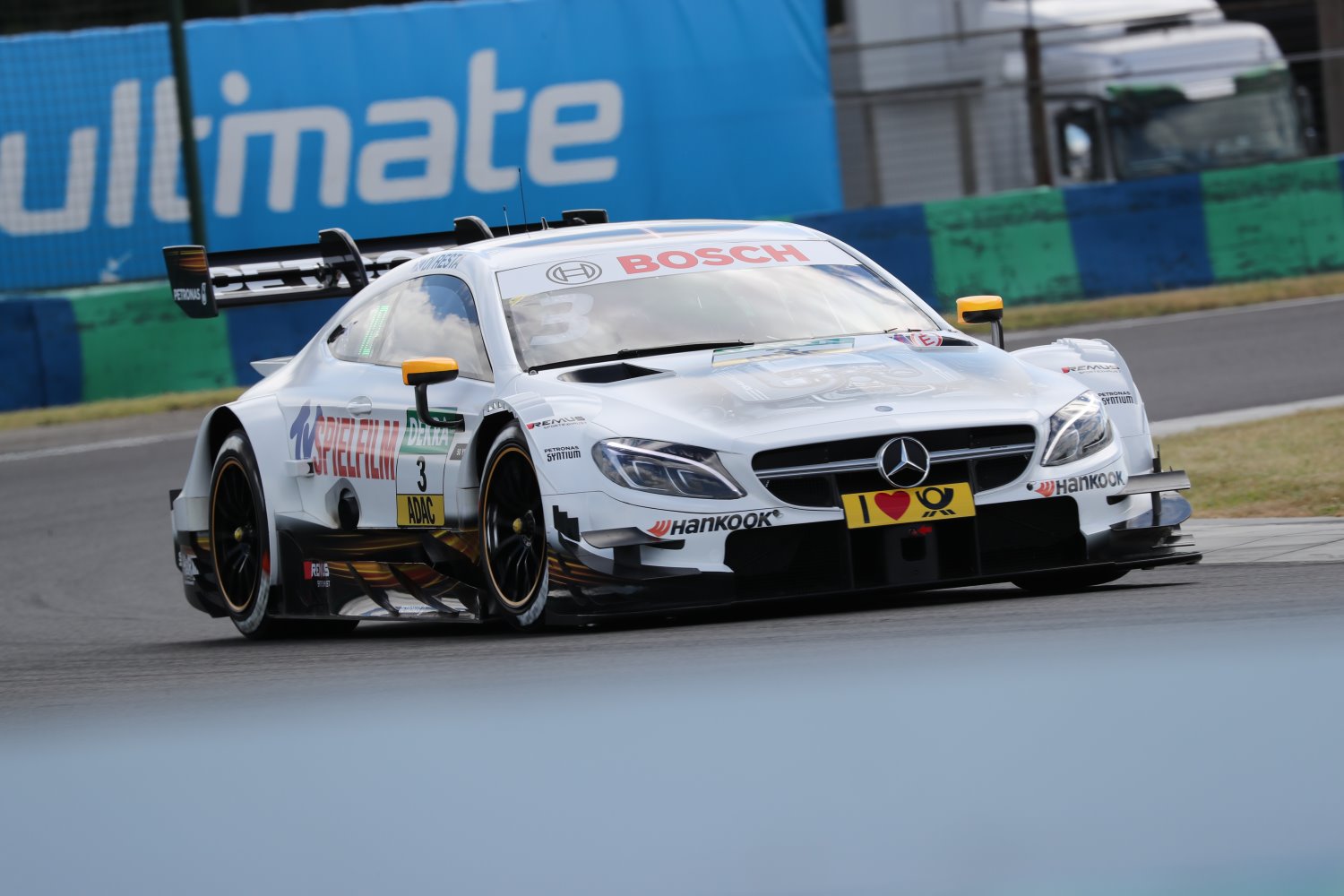DTM 2018: The changes for the new season
 |
| Paul di Resta |
DTM fans may look forward to an even more thrilling and diversified season, this year, as the DTM regulations for 2018 were enhanced according to the credo 'better racing due to lower downforce'. The reduction of aero components mounted on the outer skins and the dropping of mechanical below the body move the driving skills of the drivers even more to the fore.
For Audi, BMW and Mercedes-AMG, the serious phase of the preparations for the season begins with the tests at Vallelunga, Italy (01st to 03rd March). Champion Rene Rast and Jamie Green use the tests at the circuit located 30 kilometers north of Italy's capital Rome to familiarize themselves with the 2018 version of the Audi RS 5 DTM while Marco Wittmann tests the new version of the BMW M4 DTM, with DTM rookie Philipp Eng being on site as BMW reserve driver. The Mercedes-AMG camp is represented at the Autodromo Vallelunga Piero Taruffi by DTM returnee Pascal Wehrlein, Gary Paffett and Lucas Auer.
The technical-regulation changes
The technical regulations mainly were enhanced regarding the aero packages of the vehicles. At the front, the cars will be equipped on every side with a so-called aero flick. This component is clearly smaller than its predecessor used in 2017. Consequently, the front spoiler was adapted by the engineers. In addition, the side duct was simplified and the end plate in the area below the doors was removed. Furthermore, the add-on parts were reduced. The basic geometry of the rear, however, was maintained. Due to these measures, the downforce of the vehicles was reduced by about a third. Furthermore, the lower drag could result – depending on the circuit – in higher top speeds.
Under the body, only linear coil springs are used. The Vallelunga tests will demonstrate if this change combined with the aerodynamic adaptations will make the cars – first of all – aerodynamically less stable in the corners, compared to last year.
The sporting-regulation changes
One of the most important changes of the sporting regulations is the reduction of the minimum total weight (driver with his gear and the vehicle). The minimum total weight amounts to 1115kg, this year, and the minimum weight of the vehicle alone to 1031kg. At the same time, the engine contingent was increased. Furthermore, the teams have the possibility to increase their crews for the pit stop by one mechanic.
"The engines used in DTM have been designed for maximum mileage and we want to prevent that the engines exceed this run-time. ITR increased the race calendar from nine to ten race meetings for the coming season, with the Brands-Hatch weekend being a two-day event with no Friday practice session. This means that we are talking about 450 to 500 kilometers more than in the past. To respond to this situation we opted for the most favourable solution. Instead of seven the manufacturers now have eight engines for their six cars that may be changed without penalty," explains Michael Bernard, Head of DTM's Technical Department.
Another change applies to the pit stops: to date, one of the eight pit-crew mechanics had the task to take delivery of the wheels at the dividing line between working lane and fast lane but now, the teams may allocate this task to two mechanics. This additional task will be executed by a member of the staff that already is on site anyway. This is not binding but recommended.
From the bulletin to an inherent part
Several of the adaptations introduced during the course of the 2017 season now are inherent part of the regulations. This applies to the Indy re-start, the limitation of the communication via the pit boards as well as the increase of the remaining minimum quantity of fuel.
Following the experiences with the Indy re-start at Hockenheim it was made the decision that the leader strictly is the one to dictate the speed. As soon as he accelerates the green flag is waved and the red lights are switched off. Accelerating is allowed only in the predefined section between the first white line and the finish line. No car is allowed to step out of formation before having crossed the finish line.
In the future, the pit board only may be used for the request to pit or in the case of a potential emergency situation. The teams may give their drivers the important hints only with single letters, figures or symbols deposited at DMSB. With this move, the tactical measures of the teams are supposed to be even more limited.
After each qualifying session and race the cars have to have a minimum quantity of one kilogram fuel in their tanks. At the beginning of the 2017 season the minimum quantity amounted to 0,5kg. Should a car not be able to return to the parc ferme under its own steam it has to have at least two kilogram of fuel in its tank. The increasing of the minimum quantity is supposed to make an end to the team's gambling with the fuel and to drivers stopping the cars right behind the finish line.
Official ITR tests at Hockenheim
During the final pre-season tests at Hockenheim, from 09th to 12th April, all the 18 drivers will get behind the wheel. And three weeks later, on 05th and 06th May, the season also will be kicked off at the circuit in Baden-Württemberg. Just as it was the case in the previous years, the fans will have free access to the grandstand, during the tests, thus having the chance of following the race action during the final preparation phase for the season.
